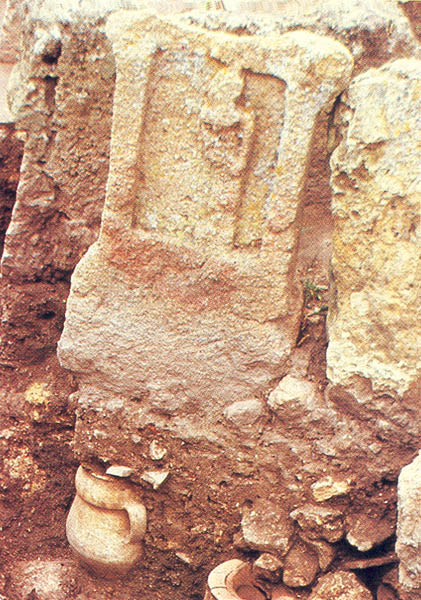Image Details

Asor Punic Project/James Whitred
The Ashes of a Child, sacrificed to appease a god, rest in the urn in the lower left corner of this photo. This urn was uncovered in a vast cemetery (at one time it may have measured nearly 65,000 square feet), called a tophet, in the North African city of Carthage. A depiction of the goddess Tanit, standing in the portal of a temple with a tambourine in hand, is still visible on the weathered sandstone monument above the urn.
Child sacrifice is well known in the Hebrew Bible, from the episode concerning Jephthah’s daughter (Judges 11:29–40) to King Manasseh’s offering of his own sons in the Valley of Hinnom (2 Chronicles 33:6). The prophets Jeremiah and Ezekiel condemn the practice as an abomination, as does Isaiah in the passage from chapter 57 discussed in this article. If the scholars who assign Isaiah 56–66 to the post-Exilic period (about 520 B.C.E) are correct about the date of these chapters, then child sacrifice may have continued among some Israelites even after the return from captivity in Babylonia.
